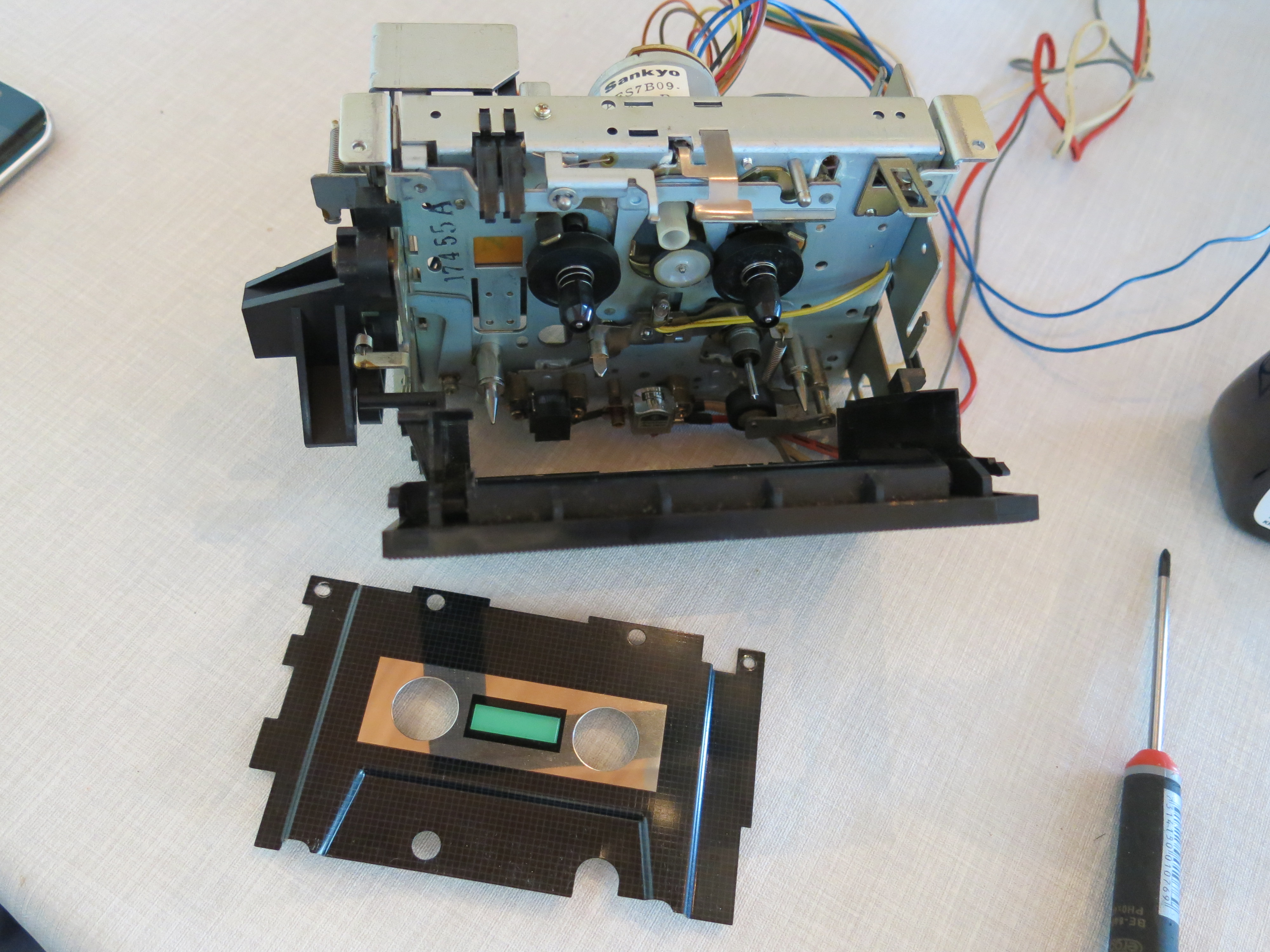
kx880/kx880_mechanical.jpg
To view high resolution images, right click on image and select View image or Save image

Press Play, Fast Forward or Rewind the corresponding LED lid up for a second then nothing happens. Under normal condition at power-on the head bridge will raise up and then be lowered again while initialize the three position switches associated with the cam mechanism. One can hear this as a couple of clicks (or rattle). This cassette deck did not make any sound at power-on. Watch video of normal power-on sequence. KX880_Normal_Power-On.mp4
Cam drive motor VA700B02 is not turning even though there is 7.5 Volt on its terminals. On this unit I learned that when pushing inwards on the end of the worm gear on the motor axel the motor would start spinning until pressure where taken off again.
Problem seem to stem from poor contact in the motor brush assembly.
Take apart the cam drive mechanism require removal of the cassette backlight bracket in front of the mechanisme to get access to one the two screws holding it.
Be careful when removing the backplate off the motor — not to break the fragile point welding holding the brush to the blade spring. Clean the commutator with alcohol or electro cleaner and sand/file the brushes lightly. To lessen any contact issues between the brush part and terminal I suggest swap around the two terminals. This ensure new contact points for the brush contact plates.
Before assembling the motor with the backplate remove the bronze bushing from the backplate and put it on the motor axle first. There is a little hole on the backside for lubrication one can use to poke out the bushing. With the bushing on the axle makes it much easier to assemble the parts without breaking the motor brush off the blade spring.
Sadly I didn't do this way and ended up breaking both brushes when struggling to get the backplate on. See picture how I had to go around the problem making new brushes from parts off a donor motor.
The Sankyo VA700B02 motor are long out of production. I've seen suggestion to use modell named RF310-T11400 or RF310-TA11400. These are plentiful on eBay. Sadly many sellers don't seem to be very concerned about accuracy of their item specifications. These motors are usually listed as 2-6V but I've seen some at 1.5-10V which is closer to the VA700B02. On this Basic X1 I cassette deck I measured 7.5 Volt on the motor terminals.
Idler tyre where cracked and cleaning would only function for a short time. This rubber ring have square profile with dimensions 10mm inner, 15mm outer and 1.9mm thickness.
Replaced with a round profile O-ring. Didn't work out to well until we sanded the top profile flat. This makes for a larger contact area between motor pulley and spool wheel.
When looking for new rubber we found X1 uses the same idler as many of Nakamichi machines does. Borrowed from an eBay listing BX-1, BX-2, BX-100, BX-125, BX-150 & BX-300, MR-1, MR-2, ZX-5, RX-202, CR-5 and CR-7 decks before S/N A130-10500 all use this idler.
Replaced with 3mm LED with a 390 ohm resistor in series. Measured voltage on the bulb where 10.5 Volt
As LED are very directional better use a LED with diffuse surface and put a black marker on top in hope it evens out more light to the build-in lens of the cassette deck.
Kenwood Basic X1 is a good sounding tape machine. It's direct drive mechanism is simple and future tested with no drive belts to wear out. The Blank Search function support song count and user can press FF or REW multiple times for number of songs to skip. There is also an input for wired remote which duplicate the six transport buttons on the front panel. One could only wish it had variable Bias/Eq adjustment for top class recordings on the sparse tape assortment available today.

kx880/kx880_mechanical.jpg
To view high resolution images, right click on image and select View image or Save image
Select file from list below
HiFi Wiki about Basic X1 https://www.hifi-wiki.de/index.php/Kenwood_BASIC_X_1
Your comment are welcome